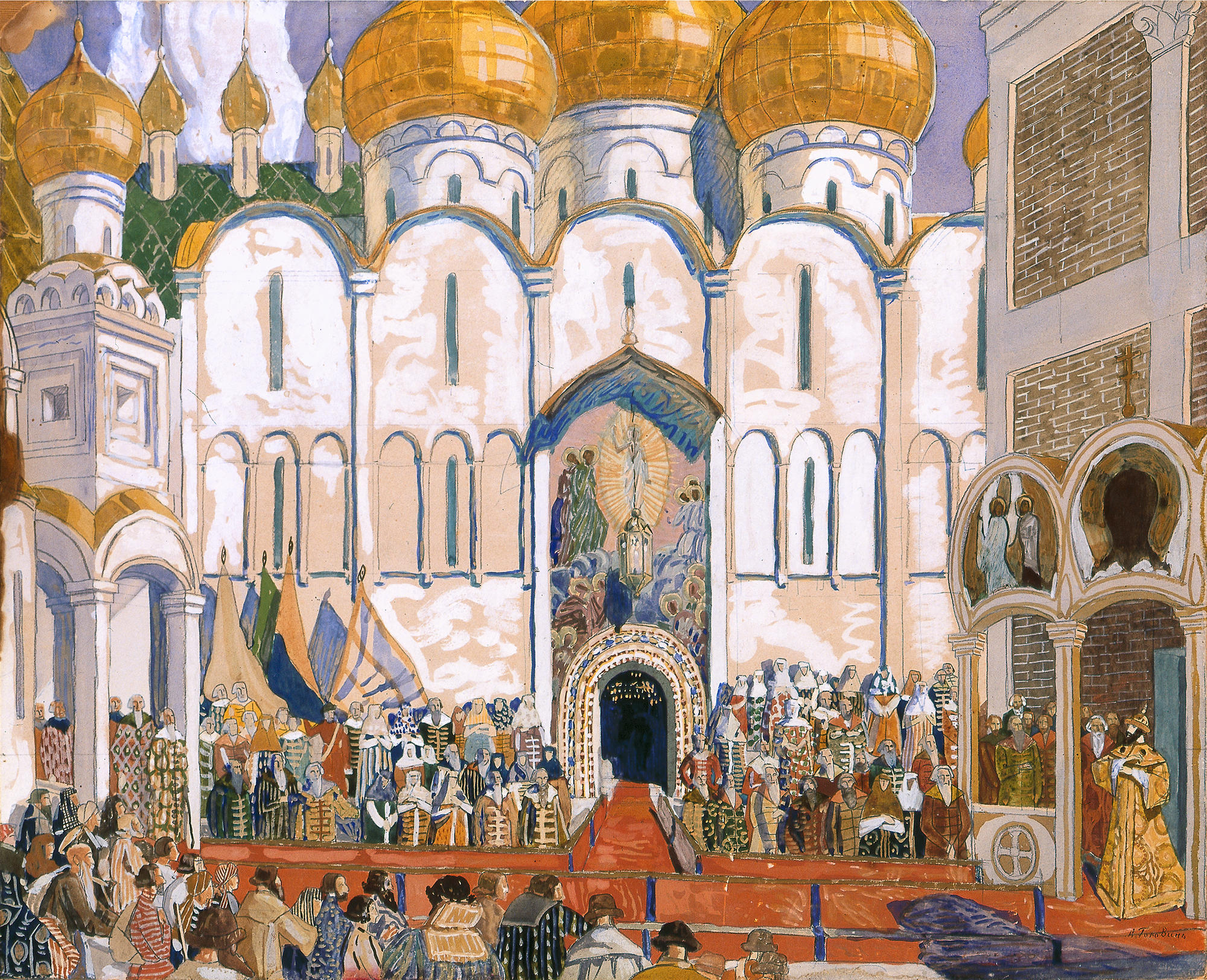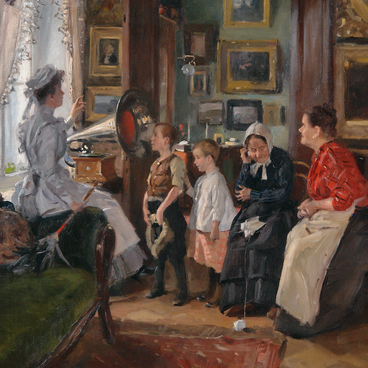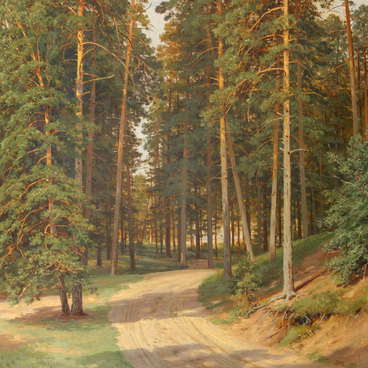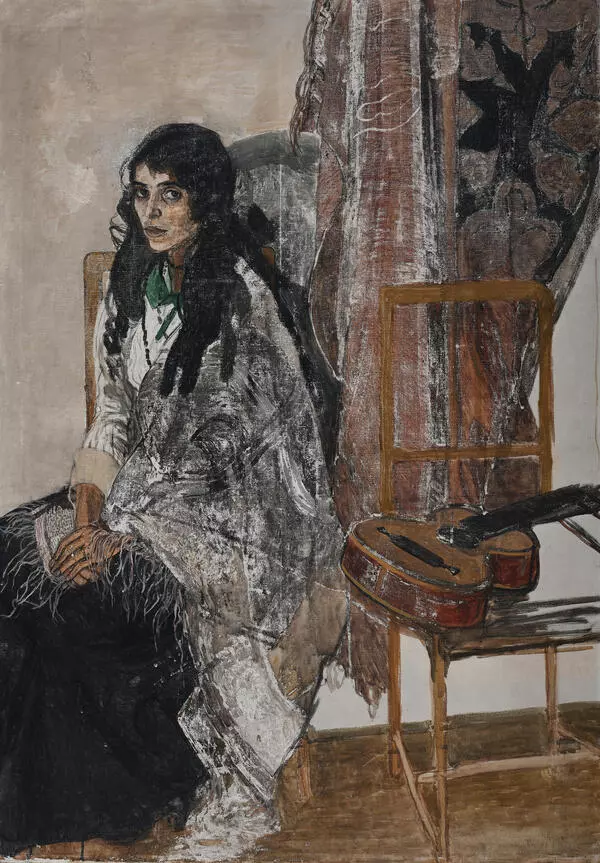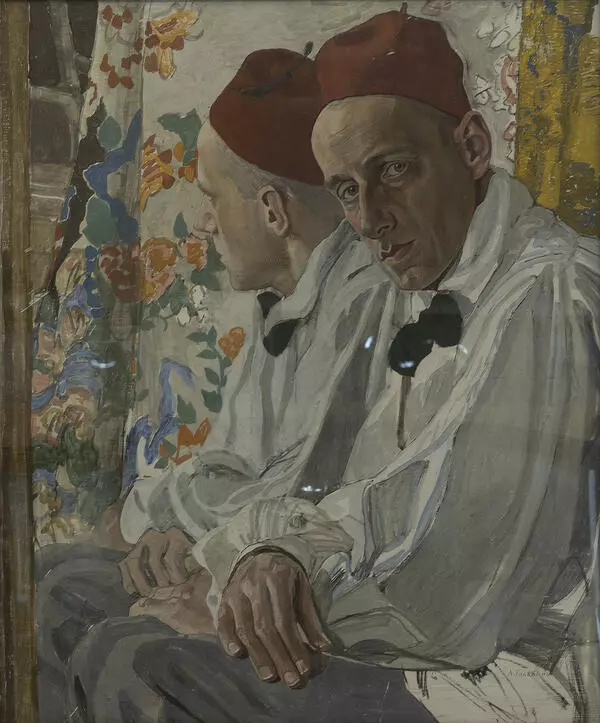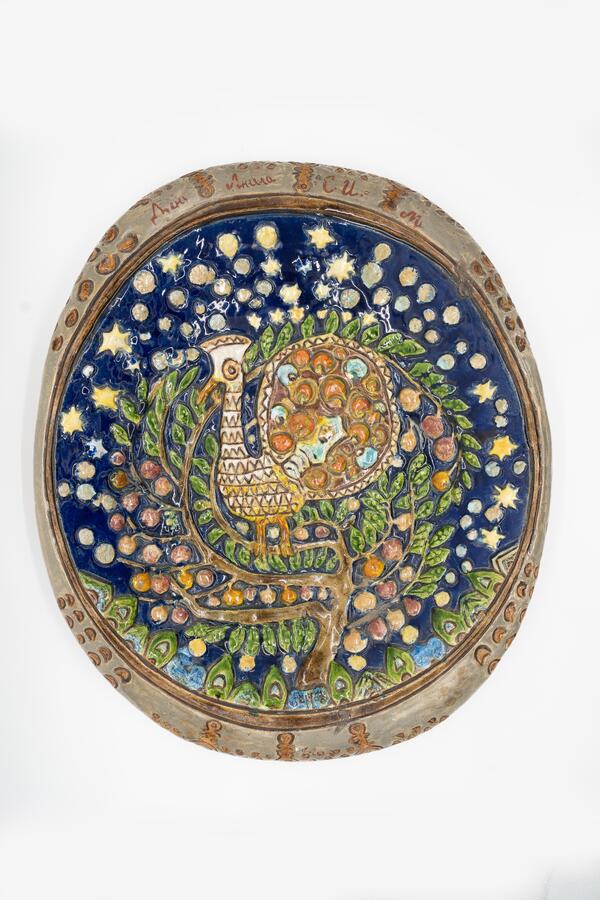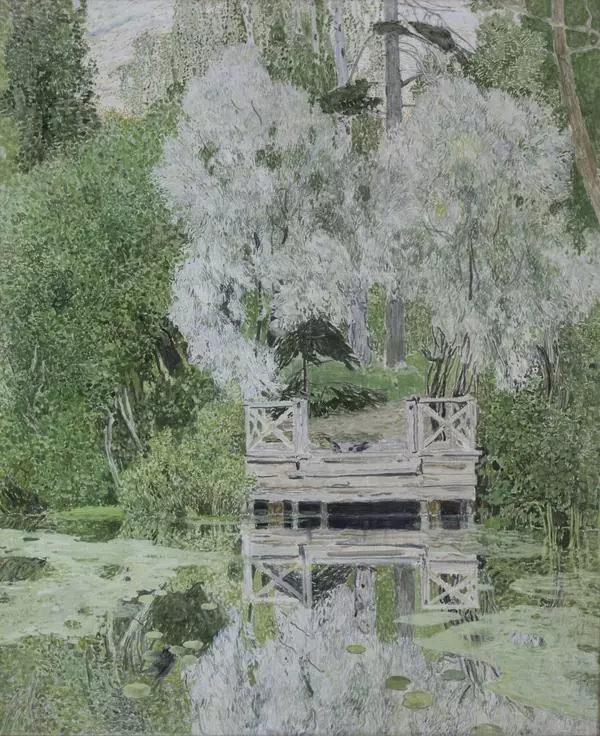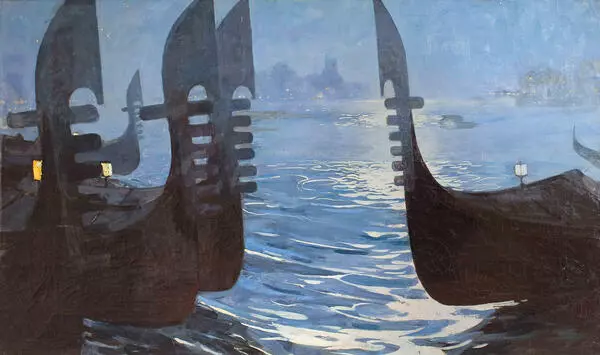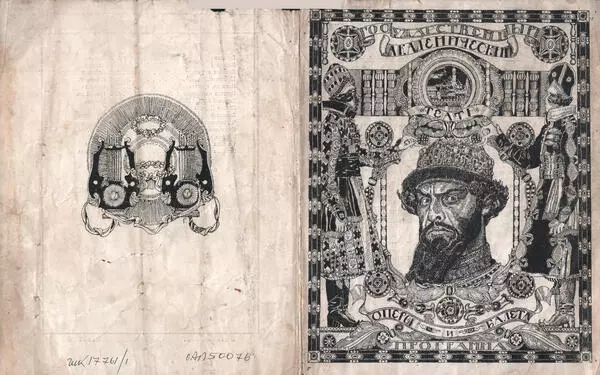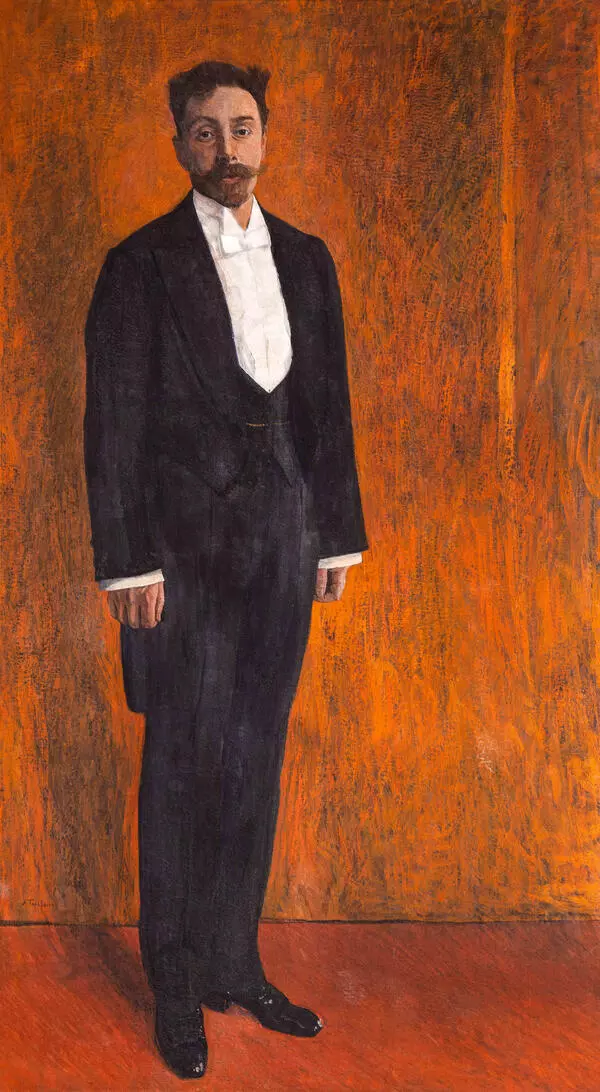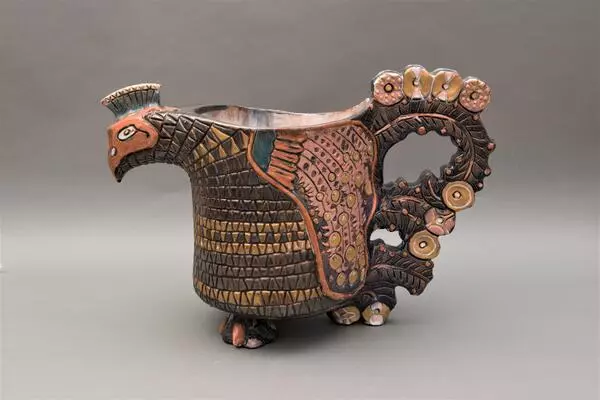Alexander Yakovlevich Golovin is a Russian artist, scenery designer, representative of Symbolism and Modernism. He graduated from Moscow School of Arts, Sculpture and Architecture, where he studied painting in the classes taught by Vladimir Makovsky, Illarion Pryanishnikov and Vasily Polenov. Later, Golovin became close with Mamontov circle an informal association of artists, musicians and theatrical personalities. Savva Mamontov, a well-known patron of arts, organised this circle in his Abramtsevo estate near Moscow in 1872.
Alexander Golovin ventured into easel painting and applied arts. He cooperated with Elena Polenova, and studied majolica with Mikhail Vrubel making various items from burnt ceramics, which he then painted with dyes and glaze. At the World Fair of 1900 in Paris, he worked on the Artisan section of the Russian Pavilion together with Konstantin Korovin, a distinguished artist.
In 1898, Vladimir Telyakovsky came to lead the Moscow Office of Imperial Theatres. He reformed the system of preparing the performances. He invited Alexander Golovin Konstantin Korovin as scenery designers to the Bolshoi Theatre. Golovin had big doubts in his capabilities, but his first experience in designing the scenery for the Icehouse, an opera by Arseniy Koreshchenko, turned out to be a success.
In 1902, Alexander Golovin became an artist-consultant for the Imperial theatres in Saint Petersburg, and in 1908, the Chief Artist. On May19, 1908, the Boris Godunov opera opened the Russian Seasons in Paris at Grand Opera organised by Sergey Diaghilev. Alexander Golovin was one of the authors of the scenery.
The main feature of Golovin’s work is aspiration for the integrality of the performance: the scenery, the costumes and all the stage requisites were fine-tuned to the very detail. The artist was especially attentive to the emotional effect of the scenery on the audience.
Alexander Golovin was the member of such associations as Union of Russian Artists, Mir Iskusstva (World of Art) and Dom Iskusstva (House of Art). He was among the artists who presented their work at Berlin World Fair in 1896, Paris World Fair in 1900, and Brussels World Fair in 1928.
Alexander Golovin ventured into easel painting and applied arts. He cooperated with Elena Polenova, and studied majolica with Mikhail Vrubel making various items from burnt ceramics, which he then painted with dyes and glaze. At the World Fair of 1900 in Paris, he worked on the Artisan section of the Russian Pavilion together with Konstantin Korovin, a distinguished artist.
In 1898, Vladimir Telyakovsky came to lead the Moscow Office of Imperial Theatres. He reformed the system of preparing the performances. He invited Alexander Golovin Konstantin Korovin as scenery designers to the Bolshoi Theatre. Golovin had big doubts in his capabilities, but his first experience in designing the scenery for the Icehouse, an opera by Arseniy Koreshchenko, turned out to be a success.
In 1902, Alexander Golovin became an artist-consultant for the Imperial theatres in Saint Petersburg, and in 1908, the Chief Artist. On May19, 1908, the Boris Godunov opera opened the Russian Seasons in Paris at Grand Opera organised by Sergey Diaghilev. Alexander Golovin was one of the authors of the scenery.
The main feature of Golovin’s work is aspiration for the integrality of the performance: the scenery, the costumes and all the stage requisites were fine-tuned to the very detail. The artist was especially attentive to the emotional effect of the scenery on the audience.
Alexander Golovin was the member of such associations as Union of Russian Artists, Mir Iskusstva (World of Art) and Dom Iskusstva (House of Art). He was among the artists who presented their work at Berlin World Fair in 1896, Paris World Fair in 1900, and Brussels World Fair in 1928.
